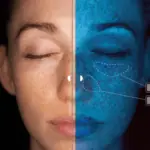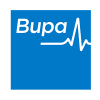FREQUENTLY ASKED QUESTIONS.
The following questions aim to provide you with some of the information you should need for before, during and after your scheduled appointment. If you have any other questions, please don’t hesitate to call us.
The two easiest ways to see a consultant dermatologist are:
- If you are funding your own treatment, you don’t need a referral so can call our team directly and a member of the team can book your appointment, or book via our Online link at the top of the page, at a time that suits your schedule.
- If you have medical health insurance, you will need a referral from a General Practitioner (GP) and will need an authorisation code from your insurance company before you can be seen or treated. Without these, you may find that your insurer will not reimburse your costs.
Our doctors are registered with all the major insurers in the UK and internationally.
- What is my diagnosis?
- What can be done about the condition?
- Is there a cure or not?
- The interview is more like a friendly discussion during which time you will have the chance to explain all your symptoms to the doctor.
- The examination may simply be a case of the doctor looking at one small part of you (e.g. in the case of a wart) or a complete skin check (e.g. in case of a mole check). In some cases, usually for more complex conditions, this may include examining other areas such as your nails, mouth, genitals, organs, lymph nodes or hair. Your consultant may use a light, magnifying glass and dermatoscope (mini-microscope) to more closely examine the skin.
- While investigation is not always necessary, it may include blood tests, patch tests, skin or hair scrapings, swabs or occasionally, for complex cases, a skin biopsy. Please note there is an additional cost incurred for each of these services.
- For medical skin conditions (e.g. acne, psoriasis etc.) there is often a prescription issued. For all treatments, education about your condition and how to manage it are key. Other treatments include cryotherapy, hyfrecation, cautery or skin surgery. Please note, there is sometimes an additional charge for these services. Occasionally, pre-treatment photographs will be taken.
- Skin biopsy
- Shave biopsy
- Excision
This procedure involves removal of an entire lesion. If the lesion is small enough, a hole punch might be used (punch excision). For larger lesions, removal is undertaken with a scalpel in the operating theatre. The wound is usually closed with stitches, sometimes combining deep dissolvable with superficial non-dissolvable. Typically, the scar that remains will be 2 – 3 times longer than the lesion excised.
Before surgery, the area to be excised or treated will be numbed with an injection of local anaesthetic. For large areas, this may amount to several injections. There is a stinging sensation when the anaesthetic is administered, but this rapidly gives way to numbness. The effect of the anaesthetic will last around 3 hours.
This means that you can be treated on a ‘day case’ basis – you will not have to stay overnight at the clinic and surgeries are over very quickly.
Following any procedure, the consultant and team will give you advice specific to your treatment. However, the information below should give you a better understanding before you proceed.
- Discard any plaster or dressing
- Wash your wound gently with warm soapy water to remove any debris. This can be done in a basin or in the shower, but preferably not the bath, as soaking the wound too long might weaken the skin.
- Pat the wound dry with a towel being careful not to disturb any stitches
- Apply fresh Vaseline to the wound
- Apply a new plaster
1. Keep the skin cool for 2-3 weeks after treatment, especially on facial areas. Anything that can cause your skin to flush should be avoided as it can cause unwanted inflammation and potentially reduce the effectiveness of the treatment. Avoid large quantities of alcohol and heavy exercise.
2. Do not expose the treated area to UV for 8 weeks after treatment to reduce the risk of pigmentation problems and always apply high SPFs (minimum 30) to treated areas for at least 6 months.
3. If you apply make up to the treated area, cleanse it very gently; pat the skin, do not rub. Anything that opens up the skin will increase the risk of infection.
4. Apply regular non-perfumed moisturiser or anti-septic cream regularly to keep the area hydrated. Do not use glycolic acid products on treated areas until fully healed.
5. Do not shave the treated area until fully healed.
6. If anti-bacterial creams are required, the clinic will provide them and advise continuing use at the time of treatment.
7. Dressings are not normally used on facial areas; keep the skin clean, dry and cool and it will recover quickly.
8. Contact the clinic immediately if you are concerned about the healing process or if you think that an infection has started to develop.






